Introducing the Leica Q3 Monochrom
First impressions on the boldest black & white camera yet
Hot off the heels of the M EV1 announcement, I get a call about a new product that’s about to expand the Leica Q family. And I couldn’t help but think, “Does anyone in Wetzlar know how to take a break?”
They don’t.
Today marks the release of the Leica Q3 Monochrom. It’s been five years since the last dedicated black and white camera in the Q lineup, and this one brings all the modern advancements of the Q3 to create what I believe might be the most compelling monochrome camera yet.
I spent the better part of a week with it, and today I want to share how that experience unfolded, what I’m most excited to explore further, and where I see this camera fitting in Leica’s lineup.
Importantly, this is not a review. I’ve only had the camera for a few days and pretending that’s enough time for a meaningful review would be asinine. So consider this a genuine first impression of what my experience was like and what I’m looking forward to testing.
Note To Readers
This is a longer story and if you’re reading this in email, there’s a good chance it may not load properly. This story is best experienced on Church & Street or through the Substack app.
What Makes a Q, a Q?
If I had to describe a Leica Q camera, I’d probably call it a premium point-and-shoot built for almost any environment. And each of those words carries real weight to it.
The Leica Q3 is still assembled in Germany and it feels like it the moment you hold it. The integrated lens maintains its high-end pedigree, and the ability to operate the camera quickly in almost any weather condition makes it something you’ll want to carry everywhere.
The Leica Q has always been designed as a premium point-and-shoot solution that thrives wherever you take it.
Fans of the Q series have had plenty to celebrate in recent years. In 2023, the Q3 marked a major leap for the family. The Q3 43 followed, offering a fresh perspective for photographers craving a tighter view. And now, this new release brings black and white photography to the heart of the Q experience. With these three models, there’s never been a better time to be a Leica Q customer.
Why Black and White?
It’s no secret that black and white photography carries a timeless appeal. Removing colour adds a layer of abstraction that can elevate the story within an image. Or, it can serve as a crutch for those who just can’t seem to master colour editing.
Whatever the case, black and white photography remains deeply popular. So much so that some photographers refuse to shoot in anything else. For them, starting with colour feels unnecessary. So what happens when you remove the colour array from a camera sensor and focus only on measuring light itself?
Turns out, you get better black and white images.
Beyond the obvious aesthetic, the sensor in this camera omits both the optical low-pass and Bayer filters, resulting in improved light-gathering capabilities compared to its colour counterpart. Because every pixel records luminance rather than splitting into red, green, and blue channels, the result is cleaner performance, especially at higher ISO settings.
You’re not just getting monochrome images, you’re getting the best version of monochrome right from the start. I plan on testing this further for a review but on paper, users can expect marginally better results.
What Can This Camera Do?
The Leica Q3 Monochrom integrates the best features of the Q3 series with a touch of something new. Here’s an overview of what the camera offers:
60MP full-frame monochrome sensor
Triple Resolution Technology
Leica Maestro IV processor
Summilux 27mm F1.7 lens
Macro mode from 17cm
5.76M-dot OLED EVF
Leaf shutter up to 1/2000
Native ISO 100–200,000
IP52 weather sealing
Two-way tilting touch LCD
8K video recording
Dual base ISO (800/2500 for L-Log video)
Support for the Content Authenticity Initiative
There’s a lot on the table, and it’s not just padded marketing. Features like macro mode, a leaf shutter, IP52 weather sealing, content authenticity support, and dual base ISO make for genuinely useful additions that deliver real value in the field. How much value they offer will entirely depend on when, where and how you shoot.
How Does This Camera Perform?
With all those features in mind, the obvious question is: how does this camera actually perform? If you’re familiar with the Leica Q3, you can expect a very similar experience.
This is a camera that feels comfortable to use one-handed, yet when paired with its optics and image processing, it delivers results that feel larger than life. Whether it is an environmental portrait, macro detail, high-energy flash work, or a fleeting candid moment, the Q3 Monochrom performs exceptionally well.
The inclusion of the Maestro IV processor and Leica’s advanced connectivity chip means syncing to the Leica Fotos app is fast and seamless. The app remains the gold standard for camera companions, and my experience with it and the Q3 Monochrom has been flawless so far.
What about autofocus? With the removal of the colour array, you lose the foundation for a phase-detect autofocus system. This means the camera relies entirely on contrast-based autofocus to acquire focus. Logically, it should perform significantly worse than a standard Leica Q3. That was my assumption.
Turns out, I was wrong.
In my early testing, the autofocus feels nearly as good as the Leica Q3. Whether it was tracking a model, moving objects, or a very uncooperative child, it kept up surprisingly well. Where it struggled was when multiple subjects appeared in the frame. This is where phase-detect systems usually excel. Again, this is not a review, so I’m not making any blanket statements until I test the camera across a wider range of environments. All I can say right now is that the autofocus of the Q3 Monochrom performs far better than expected for a contrast-only system.
I also want to mention that the same stabilization system found in the Leica Q3 is available here and kicks in at slower shutter speeds. This proves especially useful when you are trying to land focus for images captured at a tenth or half a second, where all 60 megapixels need to line up perfectly.
As a Maestro IV camera, users also get the full functionality of the Leica Fotos app, especially when it comes to offloading images quickly. But what about Leica Looks? What happens when you download unique colour profiles to a black and white camera?
It works. Sort of.
Like most modern Leica cameras, you can shoot JPEGs and apply a Look to them. When you apply a Leica Look here, you are essentially applying a colour profile to a monochrome JPEG, which results in a colour tint on a black and white file. It won’t give you the same magic you get on a Q3 or SL3, but there is still some creativity to explore if you adjust the intensity and experiment with different tones.
How Is The Image Quality?
The Leica Q3 packs a great sensor with incredible image quality, and the Monochrom takes it even further. While you lose colour, you gain, at least in my early testing, a touch more detail.
While these images are obviously compressed for the web, I’ve included a few frames to give you a sense of what this camera can do.
Users will immediately appreciate how much shadow detail you can recover from an underexposed shot. Because you’re recovering pure luminance, shadow recovery on this camera isn’t only generous, it’s cleaner.
I’ll need to spend more time with this camera to see how it truly compares to its colour counterparts, but at first glance, it feels like a powerful black and white tool. It doesn’t come across as a second-class product. Far from it. It feels like the makings of a versatile, precision-built instrument.
What Else Makes This Camera Unique?
The inclusion of the content authenticity encryption process from the Leica M11-P and SL3-S caught me by surprise, but I’m glad it’s here. Being the first Q camera to feature this system shows that Leica is serious about protecting and authenticating its users’ work, not hiding it behind a premium tier of products. I think it’s safe to expect this technology on most, if not all, major Leica cameras moving forward.
There’s also the dual base ISO, which allows video shooters to capture clean, consistent footage at both ISO 800 and 2500. It’s a small upgrade, but one that makes a real difference for creators working in tough lighting conditions.
And of course, the design. For me, this is the best-looking Q model yet. The omission of the red dot, paired with the monochromatic script, gives it a refined, understated presence. I love it, and I wouldn’t be surprised if a few people buy it for the look alone.
Yes, I called the look of a camera a feature. Because like I’ve said before, if a camera looks good, feels good, and makes you want to pick it up, guess what? That’s a feature.
Anything That Might Surprise People?
I want to highlight something that I think most people will overlook: video. This was my first time experiencing cinematography with a monochrome sensor, and I have to say, it’s fascinating. The Leica supports L-Log recording up to 8K, and for optimal results, C4K at ISO 800 or 2500 seems to be the sweet spot.
While this may not be a headline feature for most users, I was genuinely surprised by how clean the files looked at ISO 800. The benefits in noise performance from a monochrome sensor seem to translate for video and it’s great to see. Time will tell if this becomes a meaningful part of anyone’s workflow, but at first glance, the juice is worth the squeeze.
Something I didn’t get to test at length but hope to for a future review is using this camera with coloured filters. Given the monochrome sensor, photographers will have the ability to use coloured filters to change the contrast and tonality of their scene. This is something that most modern photographers don’t tap into, and I think owners of the Q3 Monochrom will genuinely be surprised by.
Who Should Be Most Excited?
Right off the bat, for people like me who are drawn to black and white sensors but can’t quite commit to an M body for that purpose, the Q3 Monochrom feels like a very appealing option.
I shoot in a black and white profile on all my cameras, and one of my long-term projects will be presented entirely in monochrome. Still, the idea of dedicating a full roster spot to an M camera that only shoots in black and white always felt like a bridge too far. With the Q, given the slightly lower cost of entry and its unique feature set like the leaf shutter, macro mode, video options, and optical stabilization, it feels a touch more compelling.
But that’s just me.
Who else should be excited? If you’ve been craving a simple yet premium solution and you live fully in the monochrome world, where your work, your prints, and your storytelling all exist in shades of light and shadow, this is a camera worth testing. It’s not enough to just like the look of black and white. You have to live it.
The bigger question is how many people will embrace the Q experience with its 28mm focal length and a monochrome sensor. That pairing makes this camera a niche product, even by Leica standards. And to be honest, I can’t give a complete answer just yet.
What I can say is this: the camera feels great to use. It has that Leica polish where the design and user interface like a joy to interact with. The hardware and software complement each other to deliver stunning results, and in the hands of a professional, masterpieces are within reach. But there are clear boundaries to this tool, and in the months ahead, I’m genuinely curious to see exactly where those boundaries lie.
This Week’s Sponsor: Espresso Displays
I’ve been using Espresso displays for over a year, and they’ve become a staple in my workflow—whether as an extra monitor at home or my main screen on overseas shoots. The Pro series is built for creatives who care about colour, clarity, and portability.
You already know the perks of their new 15 Pro. What sets them apart even more is their customer support. Based in Australia, the team at Espresso is focused on building quality products and backing them with top-tier service. As you can see from their Trustpilot score and immediate response to concerns.
I only partner with brands I genuinely use and believe in. After a year of putting these displays to work, I can confidently recommend them to any creative looking for a high-quality travel monitor.
Use code GAJAN10 at checkout to save 10% on your first order. And if you do try one out, let me know how it goes. I’d love to hear about your experience.
Upcoming Events & Workshops
Toronto Studio Photography Workshop
This November, I’m hosting a studio photography workshop designed to elevate your skills. Whether you’re a beginner looking to build a solid foundation or an experienced photographer looking to refine your craft, this workshop will educate you in the essential techniques of studio work. Full details can be found here.
Leica Akademie: Video for Photographers (Seattle)
In March of next year, I’m leading a three-day workshop for photographers who are new to video. Whether you’re looking to create short films, branded content, or simply elevate your visual storytelling, this workshop provides a practical introduction to filmmaking. Learn more here.
Arctic 2026 Photography Adventure
In 2024, I traveled to Svalbard with Quark Expeditions and it was unforgettable. I’m planning a return trip in 2026 with a group of photographers. This is not a workshop. It’s an excuse for like-minded storytellers to visit one of the most remote places on earth. If that sounds like you, fill out this form to learn more.
Next year, I’m heading to India again for our second street photography adventure across the North and South. Seats have just been made available for those looking for a deep, immersive photography experience. Learn more here.
Previous Favourites
November Contest
This month, I’ll be giving away a $200 gift card to the Moment Shop where the winner can save big on their next camera, lens, bag, or courses. Moment has so many creative products to choose from and $200 can absolutely make for a great deal.
How will I pick the winner? Make sure you’re signed up for this newsletter then leave a comment on at least one post from this month. I’ll be randomly picking one person, confirming they meet the requirements and contacting them directly before announcing the winner publicly.
As always, this contest is void where prohibited by law. Good luck!
My thanks to the team at Moment! Not only for this contest but for being the longest supporter of my work online. They’re a lean team of passionate creators that truly believe in supporting other creatives on their journey. Whether it’s a new camera, lens, workshop, or just some great articles, visit ShopMoment.com today.
What’s Next?
This weekend, I’m hosting my first Studio Photography Intensive. We have a great group signed up and can’t wait to put them through two days of incredible training. At the time of writing, I actually don’t know if I have spots available. But if this link works, it means you still have a chance. Good luck!
GB


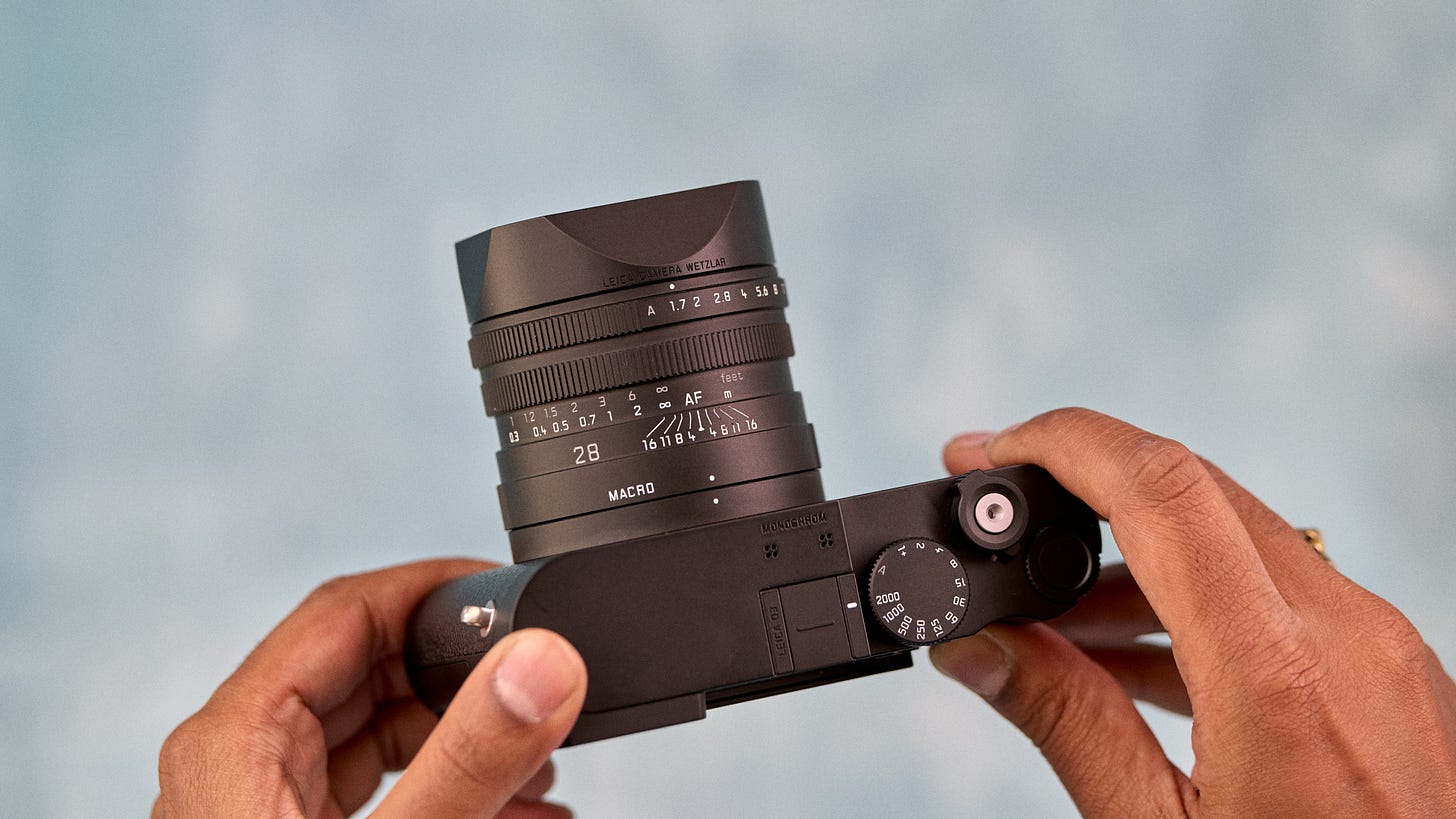



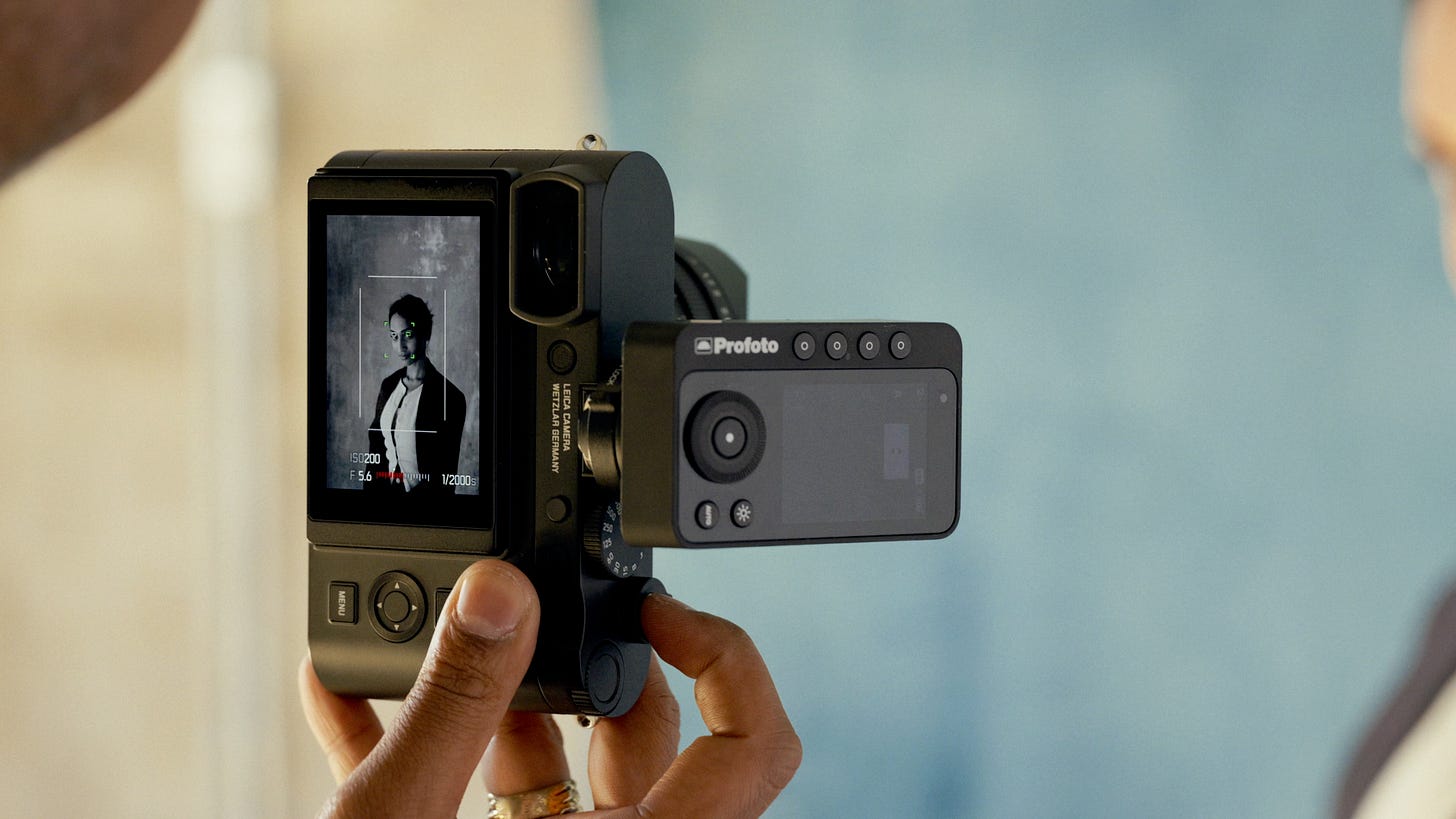

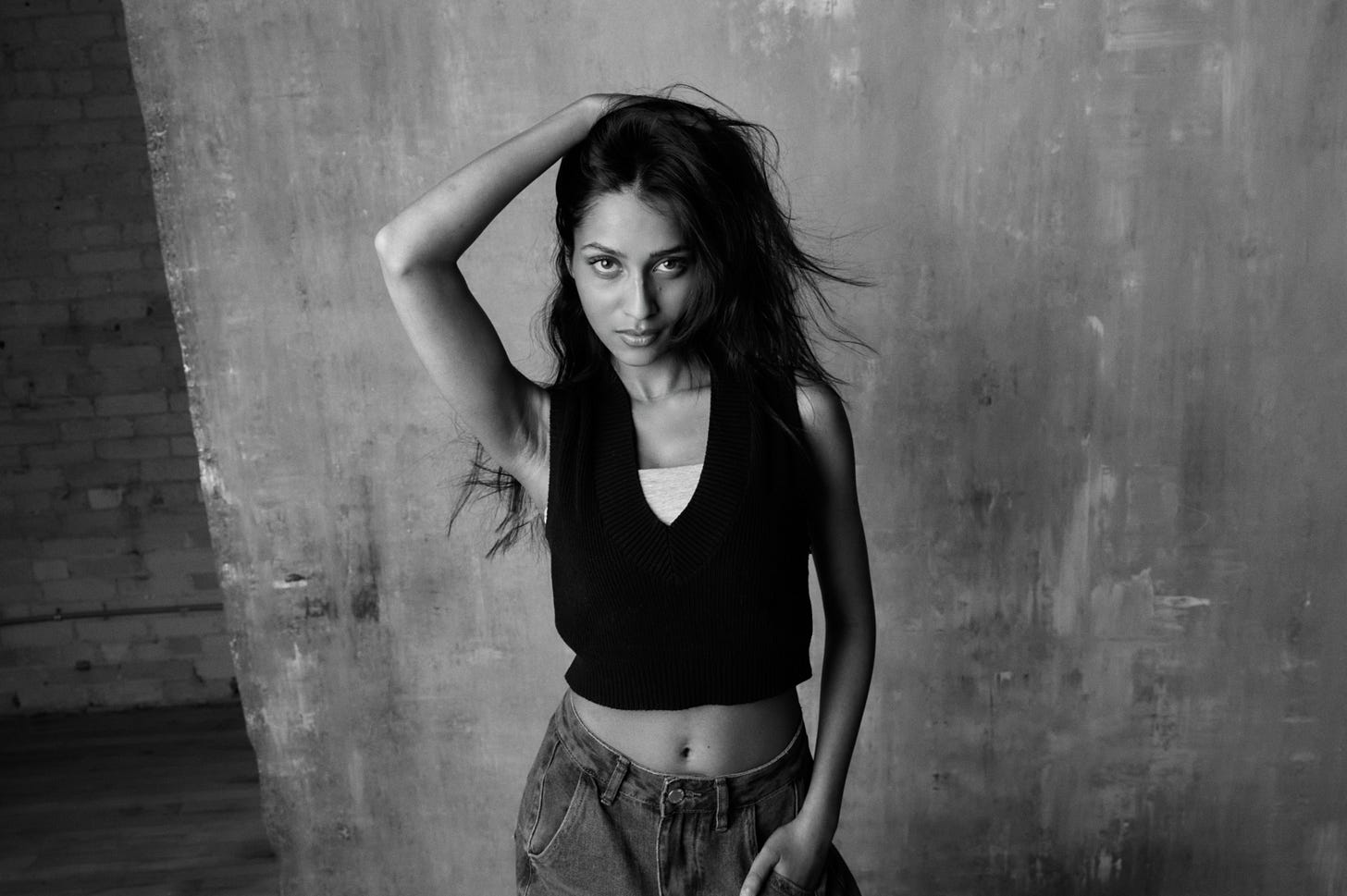

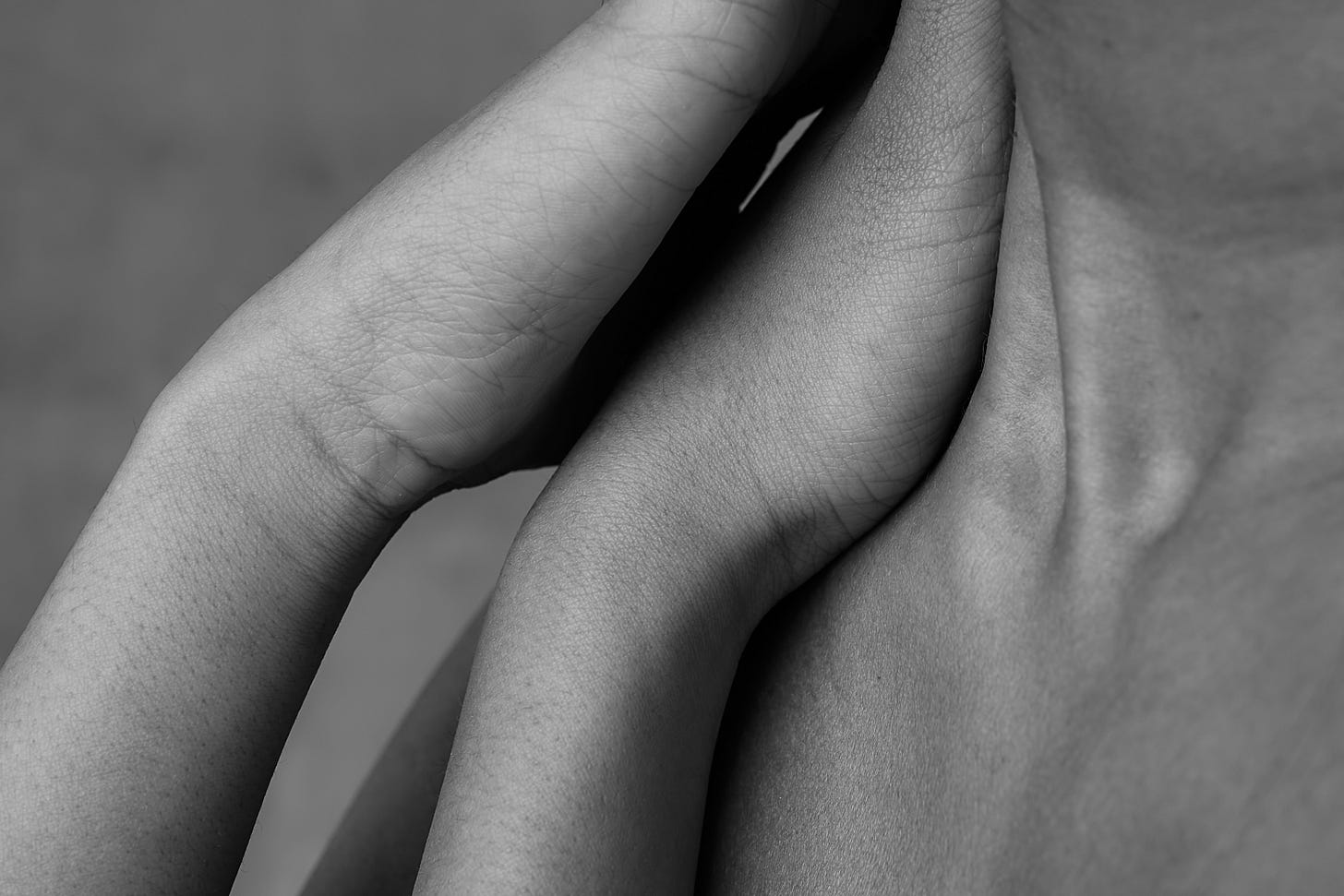


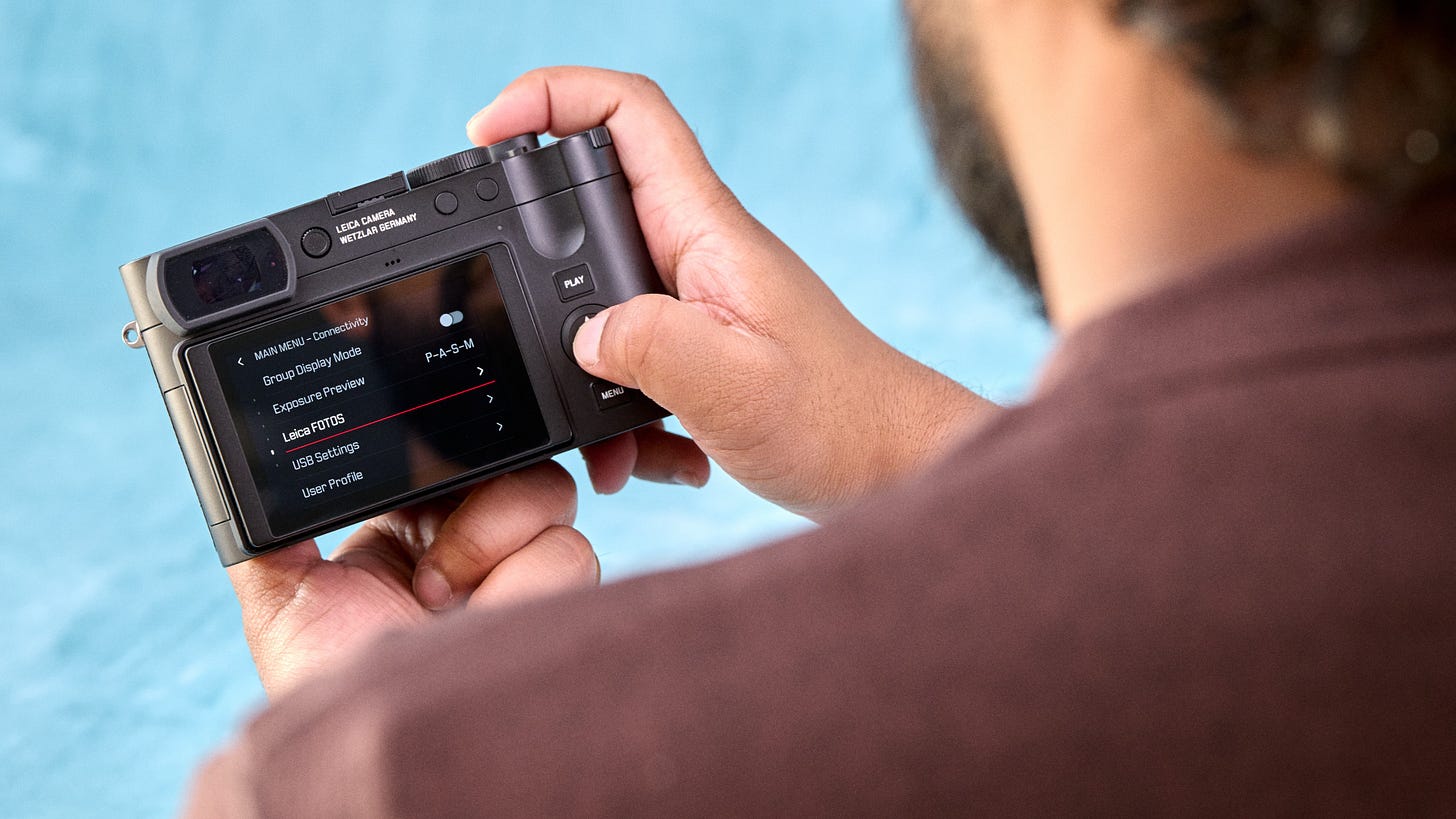
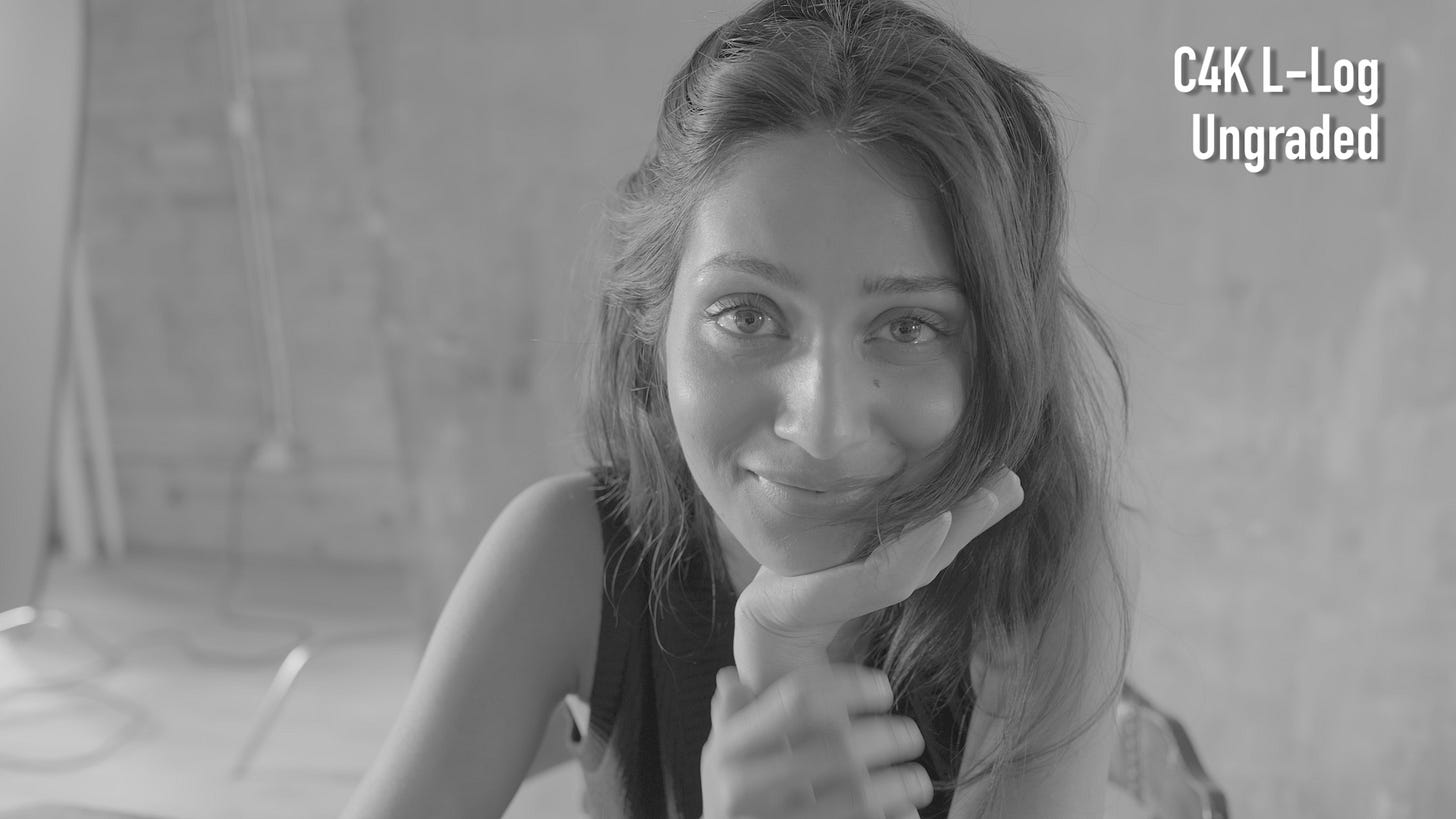

Wonderful portraits! The detail in the skin of the model is so astounding! Love the review. Question: Do you recommend this to someone who already has a Q2M and / or an M11 monochrom - if that someone doesn't really care for video? Keep up the good stuff. Also, can you, say, post a couple of photos comparing the Q2M and Q3M at 50mm resolution, so that the Maestro processor differences can be observed (I am thinking the processor in Q3M is the new one)?
Amazing detail in the shots!